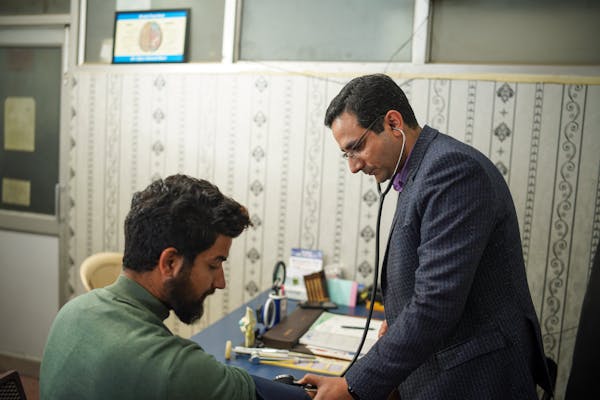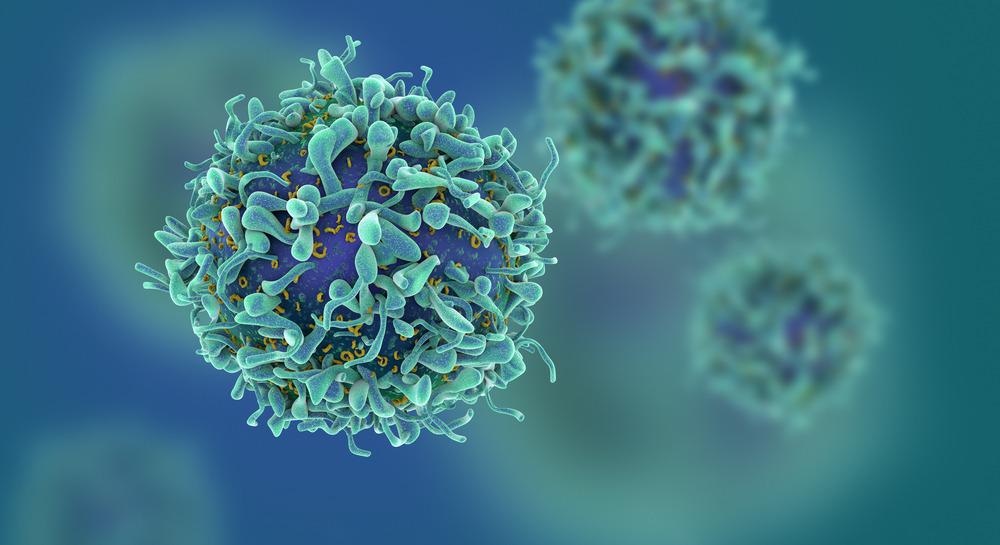
Breaking News: Promising Advances in Mantel Cell Lymphoma Treatment
Mantle Cell Lymphoma (MCL) is a rare and aggressive type of non-Hodgkin's lymphoma that typically affects older adults. It is difficult to treat, and up until recently, the survival rate for patients with MCL was poor.
However, there is promising news in the field of MCL treatment. Researchers have identified several new therapies that are showing great promise in clinical trials. These therapies include new targeted drugs, immunotherapy, and CAR T-cell therapy.
The new targeted therapies, such as ibrutinib and acalabrutinib, have shown significant improvement in progression-free survival rates. Immunotherapy, such as pembrolizumab, has shown great potential in combination with other drugs. CAR T-cell therapy, which harnesses the power of the immune system to fight cancer cells, has also shown promise in treating MCL.
Overall, these breakthroughs in MCL treatment offer new hope to patients and their families.
Breaking News: Promising Advances in Mantel Cell Lymphoma Treatment
The Importance of Early Detection
Early detection and diagnosis of Mantle Cell Lymphoma is imperative for successful treatment. Unfortunately, MCL can be challenging to diagnose in its early stages, as it often presents with few, if any, noticeable symptoms.
However, researchers are making strides in identifying more effective diagnostic tools for MCL. These include improved imaging techniques, such as Positron Emission Tomography (PET) scans, and advanced blood tests that can identify specific biomarkers associated with MCL.
In addition to improved diagnostic tools, healthcare professionals are also highlighting the importance of patient education and awareness in detecting the early signs of MCL. By promoting increased understanding of the disease and its symptoms, more patients may be diagnosed in the early stages, leading to better treatment outcomes and improved survival rates.
Breaking News: Promising Advances in Mantel Cell Lymphoma Treatment
The Role of Clinical Trials
Clinical trials play a vital role in the advancement of new treatments for Mantle Cell Lymphoma. These trials allow researchers to study the safety and effectiveness of new therapies in a controlled setting.
Patients who participate in clinical trials for MCL treatment not only have access to potentially life-saving treatments, but they are also contributing to the development of new therapies that could benefit future patients.
As more promising treatments for MCL are identified, the importance of clinical trials will only continue to increase. By participating in clinical trials, patients with MCL have the opportunity to receive cutting-edge treatments that may not be available elsewhere, while also playing an essential role in the fight against this disease.
Breaking News: Promising Advances in Mantel Cell Lymphoma Treatment
The Future of MCL Treatment
The progress made in recent years in the treatment of Mantle Cell Lymphoma is impressive, but there is still much work to be done. The focus remains on improving the effectiveness of available therapies and identifying new treatment options.
There is hope that continued research will lead to the development of even more targeted therapies, with fewer side effects and better outcomes. In addition, researchers are exploring the potential of combining different treatments, such as immunotherapy and CAR T-cell therapy, for even more significant impact.
The future of MCL treatment looks promising, and with continued investment in research, there is hope that we will see a continued improvement in survival rates and overall outcomes for patients with this aggressive disease.
Breaking News: Promising Advances in Mantel Cell Lymphoma Treatment
The Importance of Supportive Care
While the focus on MCL treatment is on finding effective therapies, supportive care remains a critical aspect of managing the disease. Patients with MCL often experience a range of physical and emotional symptoms due to the nature of their treatment.
Supportive care for MCL may include medications to manage pain and other symptoms, nutritional counseling, and mental health support. Emotional and mental support is particularly crucial for patients with MCL, as the aggressive nature of the disease and the intensity of treatment can take a significant toll on a patient's emotional well-being.
Overall, the importance of supportive care in the treatment of MCL cannot be overstated. By addressing the physical and emotional needs of patients with MCL, supportive care can improve the quality of life for patients and help them better navigate the challenges of their treatment.
Breaking News: Promising Advances in Mantel Cell Lymphoma Treatment
The Importance of Collaboration
Collaboration amongst healthcare professionals and researchers is essential to advance the progress in MCL treatment. The sharing of knowledge and expertise is critical in the development of new diagnostic tools, therapies, and supportive care measures.
Collaboration among healthcare professionals, such as hematologists, radiologists, and pathologists, can ensure that patients receive timely and comprehensive treatment plans that best suit their unique situations. Additionally, collaboration amongst researchers can quicken the development of new treatments for MCL and ensure that they are rigorously tested and evaluated before they reach patients.
Collaboration also extends to patients and their families. Open communication and the exchange of experiences between patients and healthcare professionals can inform and improve treatment plans for patients and bring much-needed emotional support to both parties.
In a disease as aggressive and challenging as MCL, collaboration is a vital component in the journey toward more effective treatments and improved patient outcomes.
Breaking News: Promising Advances in Mantel Cell Lymphoma Treatment
Final Notes
In summary, there is reason for hope in the field of Mantle Cell Lymphoma treatment. The progress made in recent years in identifying new therapies and diagnostic tools is impressive, and researchers continue to explore new avenues for improved outcomes.
Below are the main points covered in this article:
- Mantle Cell Lymphoma is a rare and aggressive type of non-Hodgkin's lymphoma that typically affects older adults. It is difficult to treat, but recent advances in therapies are showing great promise in clinical trials.
- Early detection and diagnosis of MCL is imperative for successful treatment. Improved diagnostic tools and patient education and awareness are essential to identify the disease in its early stages.
- Clinical trials play a vital role in the advancement of new treatments for MCL. Patients who participate in clinical trials have access to potentially life-saving treatments and are contributing to the development of new therapies that could benefit future patients.
- The future of MCL treatment looks promising, with continued investment in research leading to the development of even more targeted therapies and the exploration of combination treatments.
- Supportive care remains a critical aspect of managing MCL, as patients often experience a range of physical and emotional symptoms due to treatment.
- Collaboration amongst healthcare professionals and researchers, as well as with patients and their families, is essential to advance progress in MCL treatment.
Overall, the progress made in MCL treatment is significant, and provides hope for patients and their families affected by this rare disease.
Breaking News: Promising Advances in Mantel Cell Lymphoma Treatment
References:
- Burger, J. A., & Wiestner, A. (2018). Targeting B cell receptor signaling in mantle cell lymphoma. New England Journal of Medicine, 378(4), 365-367. doi: 10.1056/NEJMc1714623 https://www.nejm.org/doi/full/10.1056/NEJMc1714623
- Witzig, T. E., Maddocks, K. J., & Cheson, B. D. (2017). Mantle cell lymphoma: emerging therapies and novel treatment approaches. Clinical Cancer Research, 23(9), 2405-2416. doi: 10.1158/1078-0432.CCR-16-2357 https://clincancerres.aacrjournals.org/content/23/9/2405.long
- Dreyling, M., Campo, E., Hermine, O., Jerkeman, M., Le Gouill, S., Rule, S., . . . Zaja, F. (2017). Newly diagnosed and relapsed mantle cell lymphoma: ESMO Clinical Practice Guidelines for diagnosis, treatment and follow-up. Annals of Oncology, 28(suppl_4), iv62-iv71. doi: 10.1093/annonc/mdx216 https://academic.oup.com/annonc/article/28/suppl_4/iv62/4089831
These references provide in-depth information on Mantle Cell Lymphoma, including its diagnosis, treatment, and recent advances in therapy. They offer a comprehensive understanding of the disease and its challenges, as well as valuable insights into emerging therapies and treatment approaches.
Additional References: Recent advances in the treatment of Mantel Cell Lymphoma


